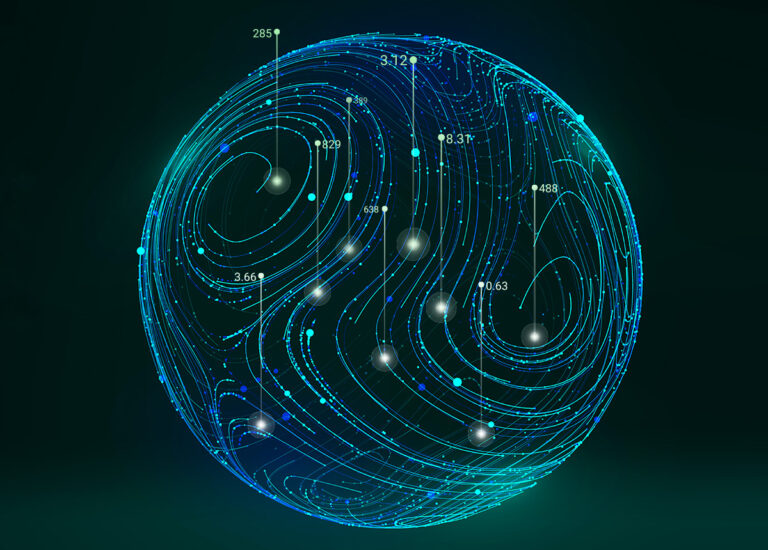
July 24, 2025
Education and E-learning
AI in eLearning: Personalizing Learning for Employees, Students, and Online Learners
Technology is changing how we learn and teach. The old classroom model, where everyone follows a standard curriculum, is being replaced. As businesses and schools look for better ways to teach skills and share information, artificial intelligence has really paved the way. It moves education beyond a single method for everyone and makes it a personal experience.
We can already see the impact. The market for AI in education is set to hit $32 billion by 2030. This rapid growth shows a real change in how we think about learning. The new focus is on building learning environments that use data, adjust to the user, and are highly personal for employees, students, and other online learners.
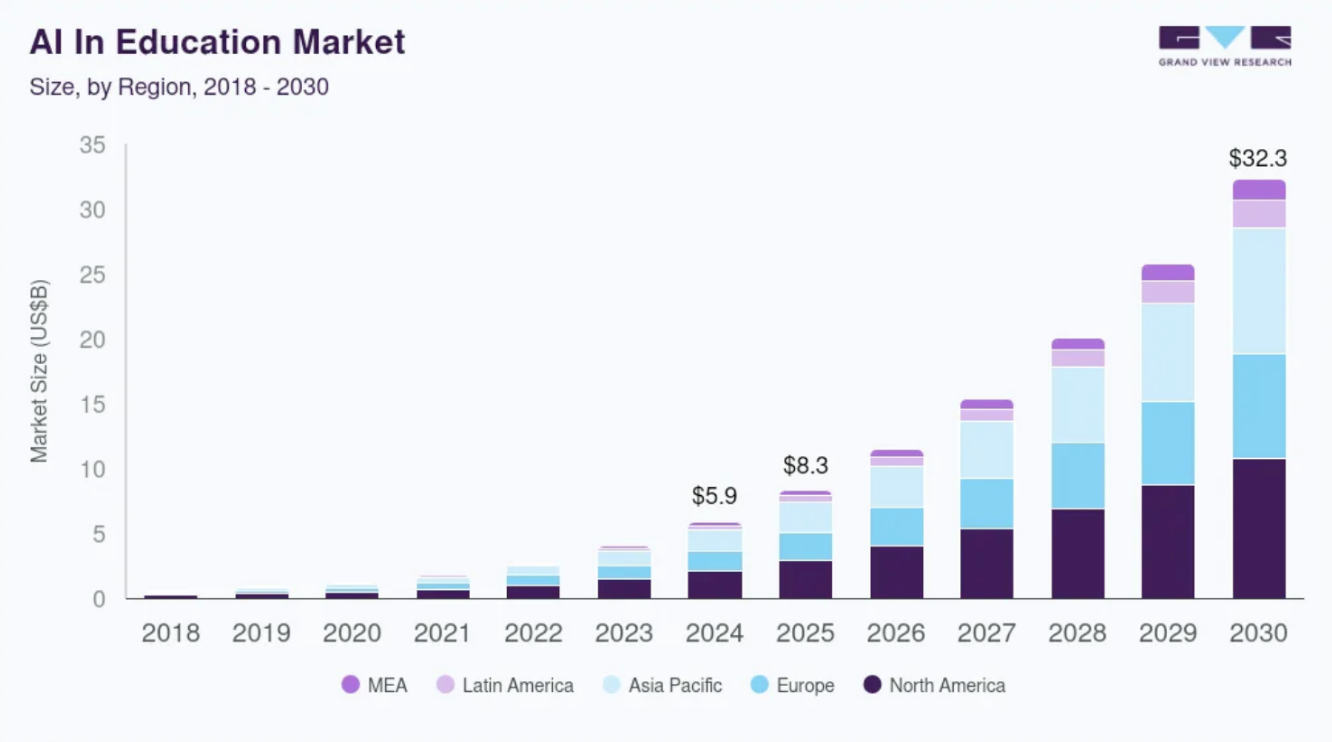 Source: Grand View Research
Source: Grand View Research
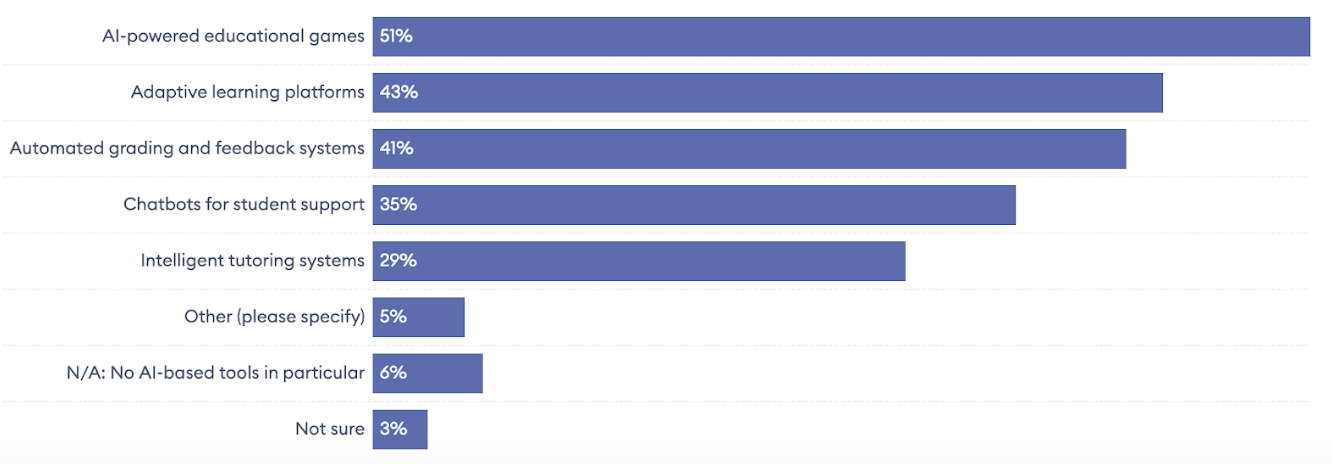 A recent Forbes survey shows that AI-powered games, adaptive platforms, and automated feedback are among the most common tools shaping modern classrooms.
Source: Forbes
A recent Forbes survey shows that AI-powered games, adaptive platforms, and automated feedback are among the most common tools shaping modern classrooms.
Source: Forbes
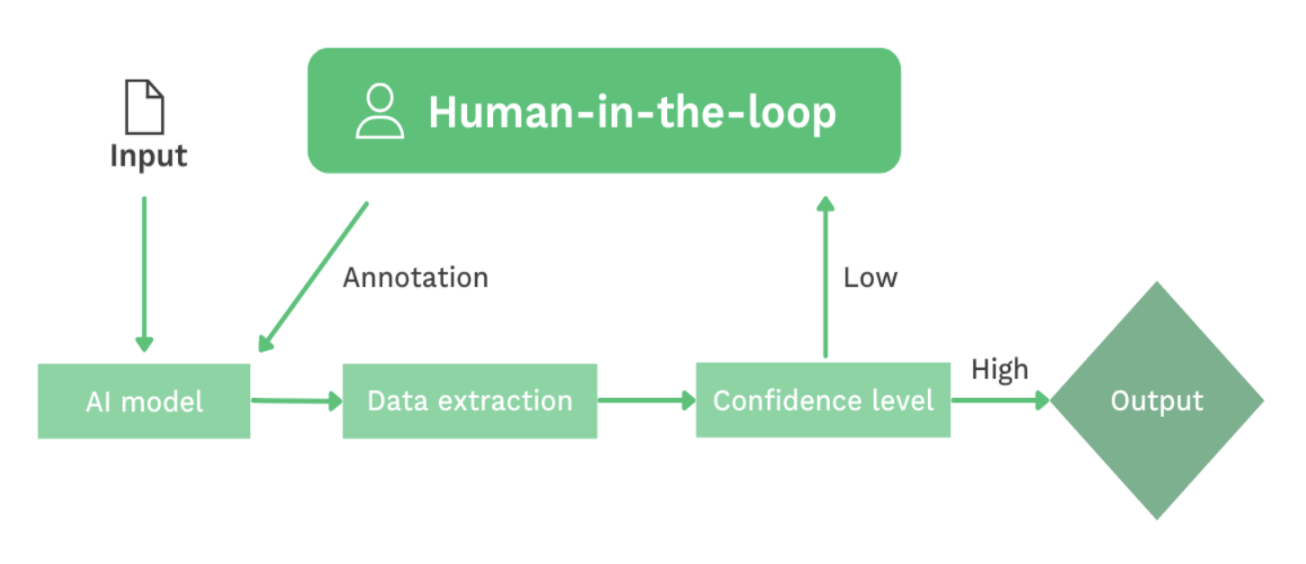 Source: Klippa
Source: Klippa
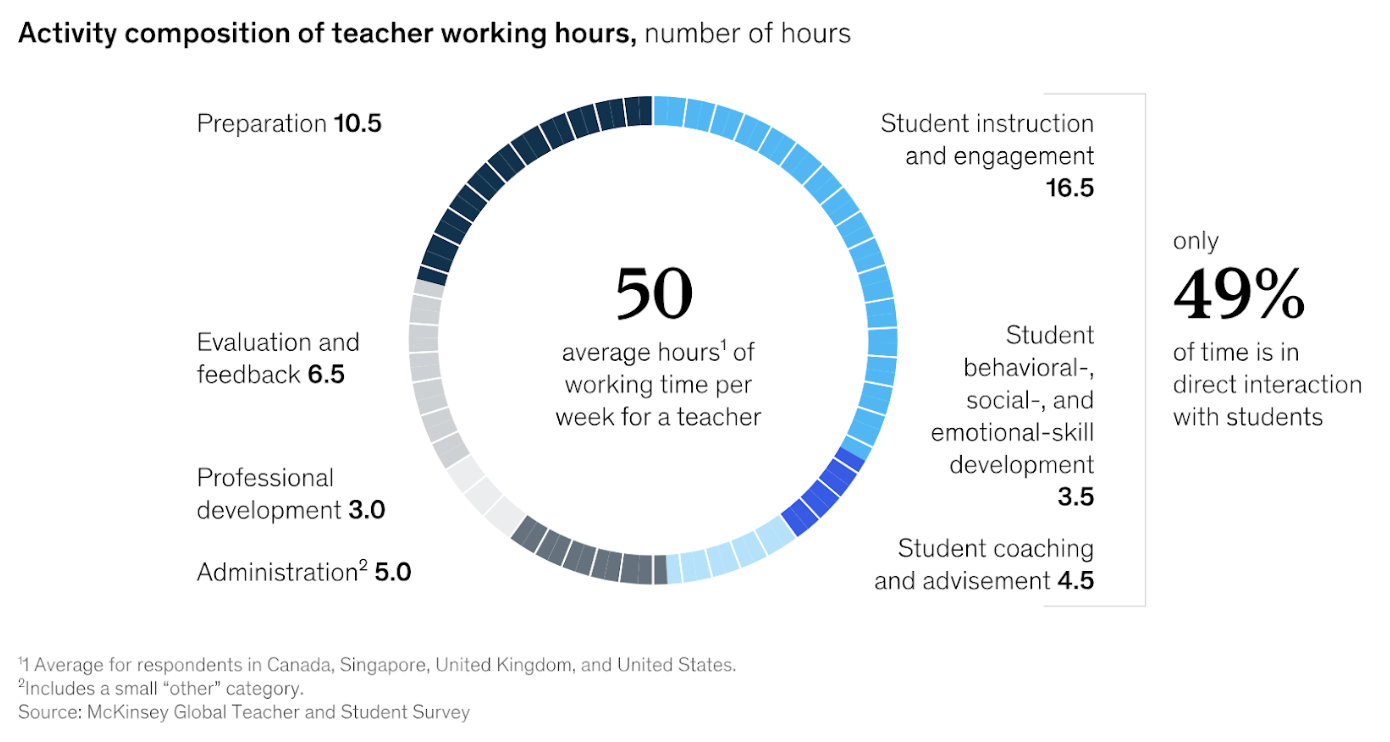 Source: McKinsey
Source: McKinsey
 Source: Grand View Research
Source: Grand View Research
How does AI re-architect learning for different audiences?
AI is not merely a tool; it is a new organizing principle that enables precision and continuous improvement across diverse learning environments. It allows the specific needs of a learner to directly shape the structure of their educational solution.Rebuilding the Corporate Training Stack
For enterprises, AI offers a way to move beyond episodic, compliance-driven training to a continuous system of skill development. The architecture of corporate learning is being rebuilt from first principles. As detailed in e-Learning Industry, the full-stack systems below treat employee development as a computational problem.- Continuous Inference and Response: These platforms constantly gather data. Instead of just showing what someone knows at one moment, they use live information. They spot skill gaps and strengths instantly. This allows them to react and adapt the training, making it effective and useful.
- Precision and ROI: This method targets training to specific needs, rather than being a one-size-fits-all approach. It gives managers tools to measure the return on investment (ROI). It helps match staff training with the company's main goals, showing real results.
Redesigning the College Experience
In higher education, AI is dissolving the rigid workflows of the traditional college. It is the engine for moving beyond the "one-to-many" lecture model to a system that aligns intervention with individual aptitude and learning styles. Platforms like Khan Academy use AI to define new standards for mastery-based learning, ensuring students build on a solid foundation of understanding. By enabling primitives like text-to-speech and simplified language, AI makes the entire educational system more inclusive and accessible, a core principle for any modern learning architecture.Empowering the Independent Learner
AI provides people who study online independently with the vital feedback that was often missing before. It makes learning active and continuously varied. Platforms like Duolingo can constantly improve the learning experience by analyzing how users interact with the system. They strike the right balance between challenge and understanding, which keeps learners engaged over time.What are the core components of personalized eLearning?
This new learning architecture is built upon a set of core technological components that, when combined, create a system far greater than the sum of its parts. A recent Forbes survey shows that AI-powered games, adaptive platforms, and automated feedback are among the most common tools shaping modern classrooms.
Source: Forbes
A recent Forbes survey shows that AI-powered games, adaptive platforms, and automated feedback are among the most common tools shaping modern classrooms.
Source: Forbes
Machine Learning as a Computational Engine
Machine learning recasts education as an information science. It is the computational engine that analyzes vast, multi-modal datasets of learner interaction. As the research in ScienceDirect shows, ML algorithms build predictive models that anticipate learning trajectories. This allows for proactive support, identifying potential learning gaps before they manifest as barriers and turning the learning process into a system of continuous, real-time, individualized inference.Natural Language Processing as a New Interface
Natural Language Processing (NLP) enables new interfaces between the learner and the learning system.- Intelligent Tutoring Systems: Conversational AI, like that used in Khanmigo, acts as a new primitive for Socratic interaction at scale, challenging learners to think critically.
- Automated Feedback: Tools that provide instant feedback on student writing are another expression of this foundation. They automate a layer of assessment, freeing human educators to focus on the mentoring and complex problem-solving that remains uniquely human.
Behavioral Analytics and the Human-in-the-Loop
The use of computer vision and other behavioral analytics to gauge engagement represents a new data frontier. However, this modality must be approached with principles. As a study in Springer makes clear, there are strong ethical boundaries. The future lies not in surveillance, but in systems that empower learners by providing connection without compromising privacy, a design challenge that demands a "human-in-the-loop" as a governing principle. Source: Klippa
Source: Klippa
What makes this new architecture important?
The shift to an AI-driven learning model produces measurable and transformative results.Improved Learning Outcomes
Precision learning delivers superior outcomes. A study highlighted in the Financial Times found that students using an AI-powered math tutor achieved "substantially higher" growth scores, demonstrating that targeted intervention works.System-Wide Efficiency
AI frees up a lot of human capital by automating basic everyday administrative tasks. A survey using data from McKinsey concluded that AI could save U.S. teachers up to 13 hours a week, which could eliminate nearly $77 billion in unpaid overtime. This is not an incremental gain; it is a redesign of how human effort is allocated within the system. Source: McKinsey
Source: McKinsey
What are the implementation challenges and ethical considerations?
While AI in eLearning has many upsides, using it also comes with challenges that need careful thought. A 2021 study published in the International Journal of Educational Technology in Higher Education showed that while AI is helpful, it can also feel invasive if it crosses certain social lines.Responsibility and Reliability
A main concern for learners is whether answers from AI can be trusted. In the same 2021 study, students worried that if AI gave them wrong information they used on a test, no one would be held responsible. Due to this concern, it is key to use explainable AI (XAI). These systems explain their results in ways that humans can understand. This lets learners see the reasoning behind a suggestion and decide if it is correct on their own.Student Agency and Over-Standardization
Some people are concerned that too much automatic help can make it harder for students to be creative and learn independently. Students in the same study said that the AI’s rigid course felt like having “helicopter parents,” because it didn’t let them explore or discover things on their own. Teachers agreed, saying it prevents students from learning through their mistakes. A human-in-the-loop model is a better approach. This means AI helps human instructors, it doesn't replace them. AI can handle data analysis and repetitive tasks, which gives educators more time to focus on mentoring students, encouraging critical thinking, and offering detailed support.Data Privacy, Security, and Surveillance
Personalized learning relies on a lot of student data, which raises serious privacy questions. People who took part in the Springer study said they don’t appreciate technology that tracks unconscious behavior, such as eye-tracking or facial expression analysis, because it makes them feel like they’re being watched. Another major concern is the risk of data breaches that could put sensitive student information in danger. Organizations need clear and open data policies that follow rules like GDPR. They must be honest about what data is collected and how it is used, and they need to give users a clear way to give consent.Case Study: Jill Watson and the Architecture of an AI Teaching Assistant
A great example of these ideas is Jill Watson, a virtual teaching assistant developed at Georgia Tech’s Design & Intelligence Lab. It helps solve a big problem: teachers spend a lot of time on routine tasks that could be automated. By answering common student questions in large online forums, Jill Watson reduces this workload and allows instructors to reach more students. The results were clear. Following its launch, student engagement in forums measurably increased, and students praised the quick, helpful responses. Based on the Community of Inquiry framework, Jill Watson helps boost teaching presence, which leads to better grades and student retention. The main challenge was scalability. The first version took 1,500 hours to build. To fix this, the lab created Agent Smith, an AI that uses a syllabus to generate a new Jill Watson in as little as five hours. Jill Watson shows what the future of education could look like. It's not about replacing teachers; it's about giving them better tools. It finds a balance between AI's efficiency and human knowledge, showing how AI and people can work together effectively.How Kanda Can Help Engineer the Future of Learning
The next era of learning will not be inherited. It will be engineered. Handling the complexities of this transition requires deep technical skill and systems-level ambition. A partnership with Kanda can translate this vision into institutional form. We work with founders and organizations to build the full-stack systems that will define the future of education.- AI and Machine Learning Services: We design and build the computational engines for personalized learning.
- Custom Solutions: We rethink learning at its core, creating tailored platforms that stay ahead.
- Development Services: We provide the hands-on, end-to-end engineering to bring transformative ideas to institutional scale.
- Data Analytics: We build the systems of inference that turn data into actionable insight and continuous improvement.
